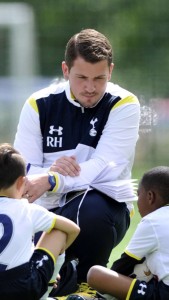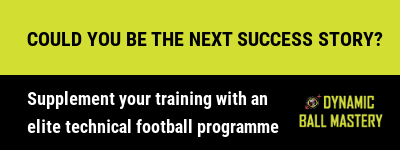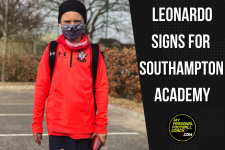
What is a 1v1 soccer training?
This may seem like a simple question, but a 1v1 is more than just trying to dribble past your opponent.
6 Types of 1v1 Soccer Training
To my mind, there are 6 different types of 1v1 soccer training
1. Going over your opponent – traditional concept of 1v1, attacker with the ball tries to beat the defender whilst face to face
2. Going around your opponent – back to opponent and/or goal, shield the ball and try to “rock and roll” into the space behind. Typically a midfielder or centre forward who has a player touch-tight to their back.
3. Pass around the opponent – hook the opponent and use a teammate to break the defender’s line with a pass (and move).
4. Beat the opponent with a shot – player does not carry the ball past the opponent but instead shoots past them.
5. No ball – player occupies their opponent away from the ball using movement to either break in to space, or to create space for a teammate.
6. Defending against the above – the ying to the yang, a 1v1 also means trying to stop the attacker beating you using any of the above.
All of the above are vital for trying to develop players who are 1v1 dominant and as such it is important for the players to gain exposure to them all.
When working on 1v1s I try to make the practices multi-outcome so the players are working on more than just the 1v1 duel, I also try to give them different contexts – beat a full back to get inside or to cross, try to get past the defender to create a goal scoring opportunity, break the defenders line to create an overload, and countless more.
However for the purpose of this article I had to choose one practice, so I have opted for a multi-outcome 1v1 which is very easy to set up and gives the players lots of goes at attacking and defending, and the opportunity for the coach to help the players with various detailed coaching points.
- Square or Rectangle 10-15y x 10-15y
- Two mini-goals at opposing ends (age appropriate goals can be used)
- A marker/pole/mannequin central and approximately 3 yards off base line where players start
- Two lines of players, one with a ball and one without, starting approximately 2/3 yards off the centre of the base line
- Coach/Server opposite players and towards the left/right corner of the playing area, depending on which side you work from.
- Red 1 tap the ball towards Blue 1 and begin to overlap.
- Blue 1 first time pass to Coach/Server and move to create an angle to receive (pass to one side of marker/pole/mannequin and move to the other). At the same time Red 1 continue overlap and run around mini-goal (if using age appropriate goals put a marker 1 yard off goal line and run around this instead).
- Coach/Server delay pass until Blue 1 is in an open position and ready to receive on the back foot.
- Coach/Server pass to Blue 1 back foot, Red 1 move to pressure Blue 1
- Blue 1 v Red 1 to score (Red 1 transition to attack opposite goal if they gain possession).
- Passing on the move (both feet)
- Overlaps/crossover movement (timing and speed)
- Angles and body shape for back foot receiving (both feet)
- Dribbling
- Tricks (forward thinking moves)
- Turning (take the ball backwards – when in a position to go around opponent)
- 1v1 attacking principles (go over, go around, beat with shot?)
- 1v1 defending principles (pressure, delay, deflect, tackle/block)
- Goal-scoring/finishing techniques
- Transitions
- Physical development (aerobic and anaerobic endurance, acceleration and deceleration, speed and explosive power, agility, resistance <via body contact>)
- Use age appropriate goals with a goalkeeper to add more goal-scoring.
- The session is easily progressed into 2v1, 2v2, and 3v2
As mentioned earlier, I am a huge fan of 1v1s. I believe they should be encouraged in training and in games, especially when working with foundation phase players, and if used properly they can develop individual technique, skill and decision making. If this article has given you even the tiniest bit of inspiration I will be happy. And for the 1v1 doubters, remember… there is more to a 1v1 than pass and press!
Master the ball master the game!
Ryan Hall
Follow Ryan on Twitter @RyanAHall






